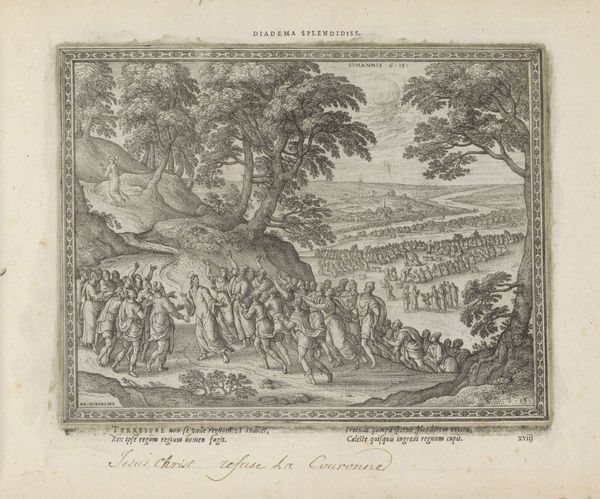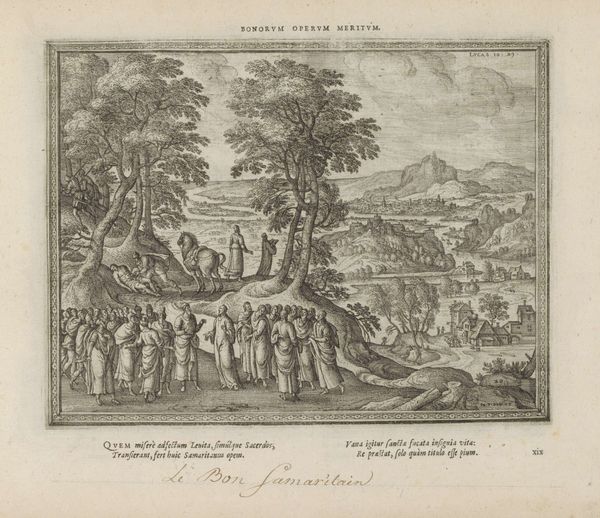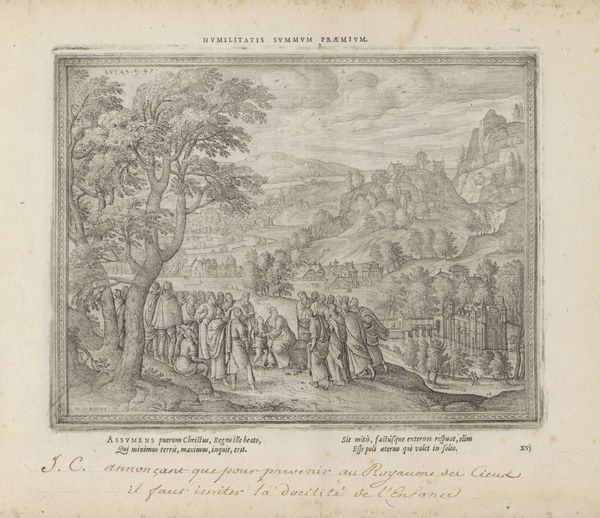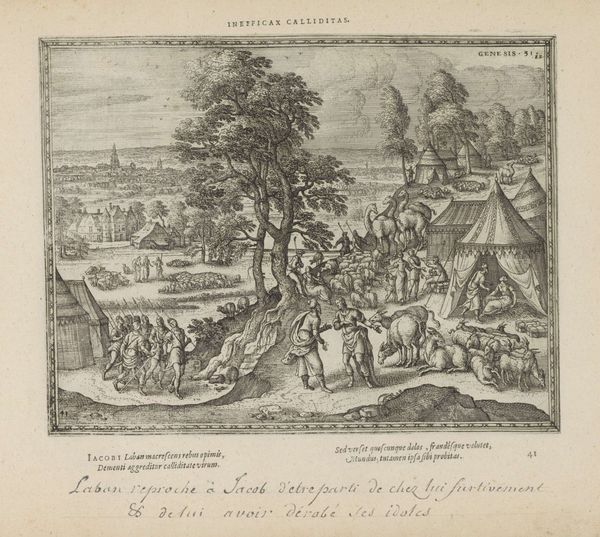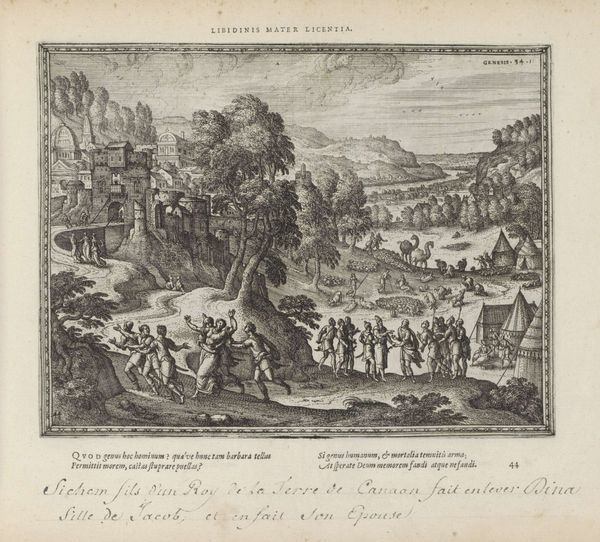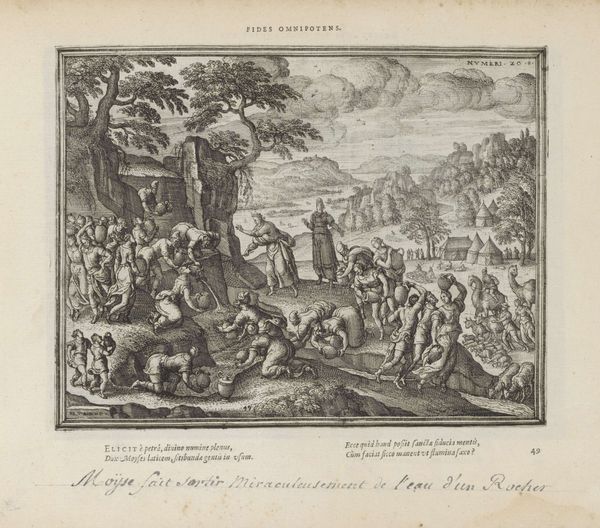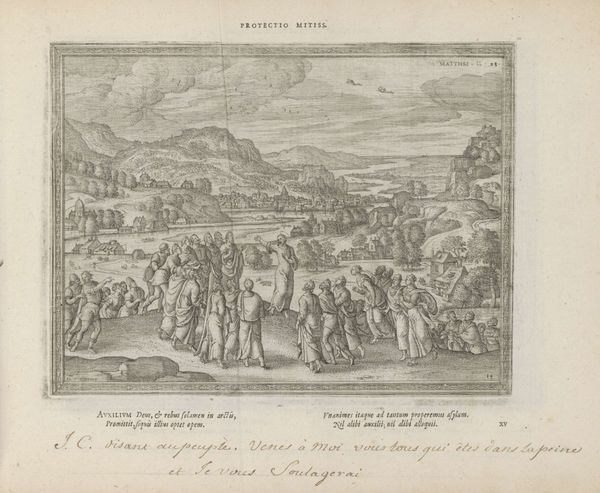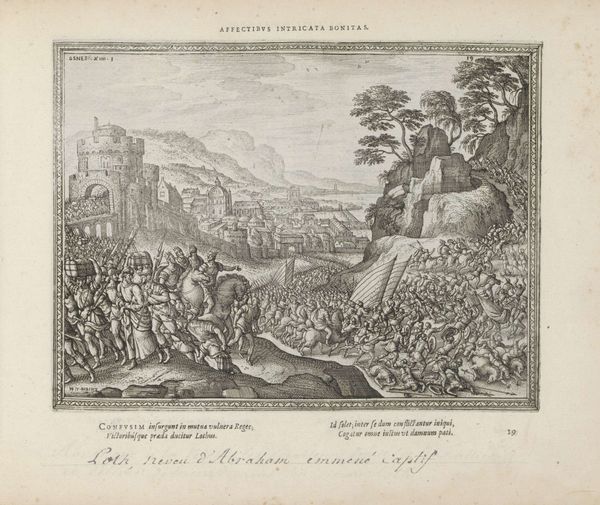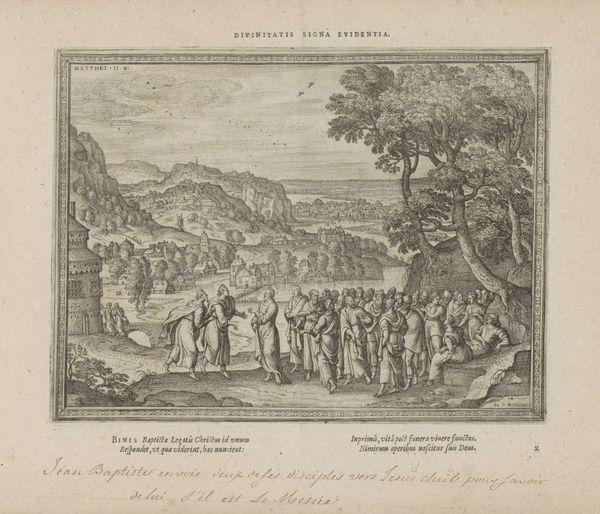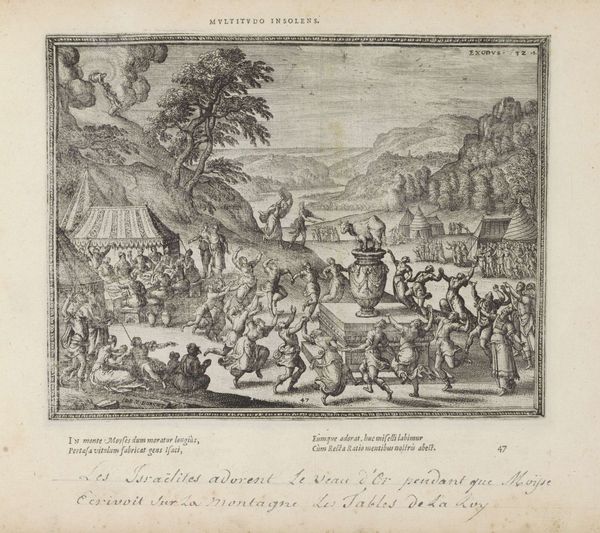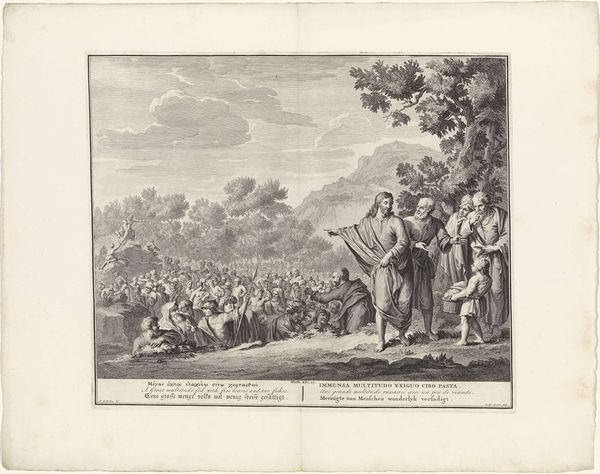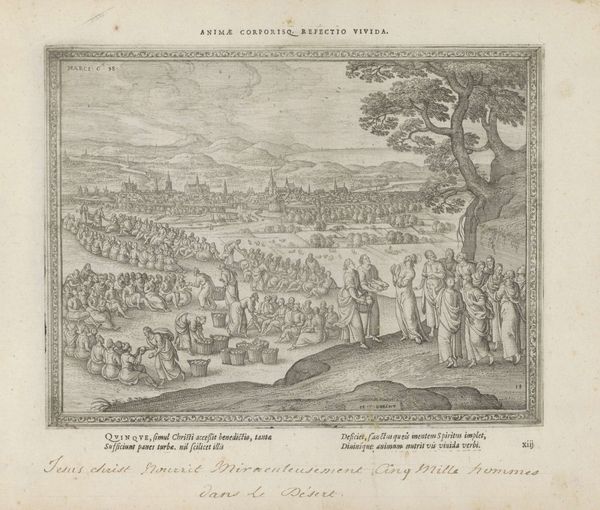
print, engraving
#
narrative-art
#
baroque
# print
#
old engraving style
#
landscape
#
figuration
#
history-painting
#
engraving
Dimensions: height 188 mm, width 243 mm
Copyright: Rijks Museum: Open Domain
Curator: What a wonderfully detailed engraving. This is "Moses Presenting the Laws to the People," dating from between 1582 and 1613, by Pieter van der Borcht the Elder. The medium, of course, is print on paper. Editor: The throng of figures feels almost chaotic! There's this energetic mix of awe and… almost apprehension? I'm immediately drawn to how van der Borcht uses line to create texture and a sense of depth, despite the medium's inherent limitations. Curator: Absolutely. And it’s crucial to consider where a print like this would circulate. This wouldn’t be viewed as "high art" in the way an oil painting by a court artist would. Prints served a different social function; disseminating information, visual ideas, even propaganda to a broader audience. Note the text accompanying the image as well. Editor: The text is so interesting. It tells the narrative of Moses bringing the laws to the Israelites, connecting visual representation to established religious understanding. The placement of the text below makes it more accessible, even like folk art meant to inspire the less privileged who had a hard time accessing this knowledge. Curator: And that’s key, I think. The creation of prints often involved a workshop or team. Labor and production become more visible. Consider the economic structures involved; the engraver, the printer, the publisher, and the vendors who distributed it. All played a role in shaping the message this artwork carried. And those tiny, expressive figures are still very well-defined. Editor: I agree, seeing them allows me to have some understanding of the emotional impact van der Borcht hoped to create. And even considering the materials – the paper itself, the inks, the press used. How each step in that material process enabled a single image to reach so many hands, influencing perceptions and solidifying cultural narratives. Curator: Exactly. The act of physically possessing a copy, reading it in the domestic space or local school… That’s a very different reception than, say, encountering a grand altarpiece in a cathedral. This particular print is held by the Rijksmuseum, a reminder that its historical circulation, function and consumption has shaped our understanding today. Editor: The very materiality of this print—the cheap production, the possibility of wider access to it—allows it to bring complex subjects from the elite and intellectual discourse, and circulate it as visual vocabulary for the rest of society.
Comments
No comments
Be the first to comment and join the conversation on the ultimate creative platform.

